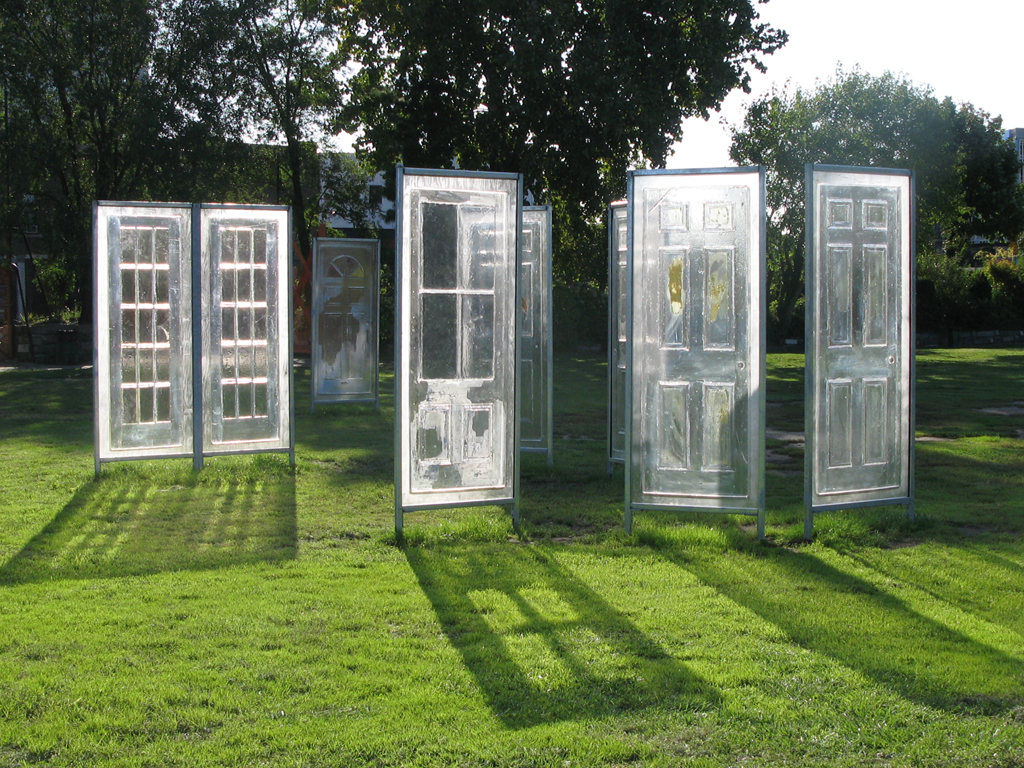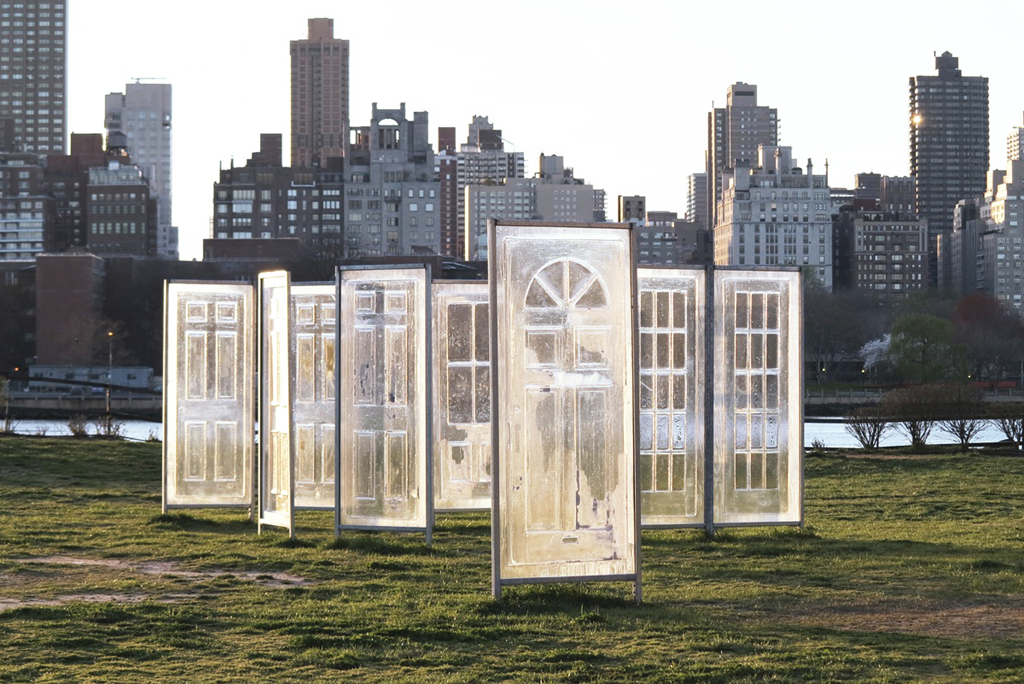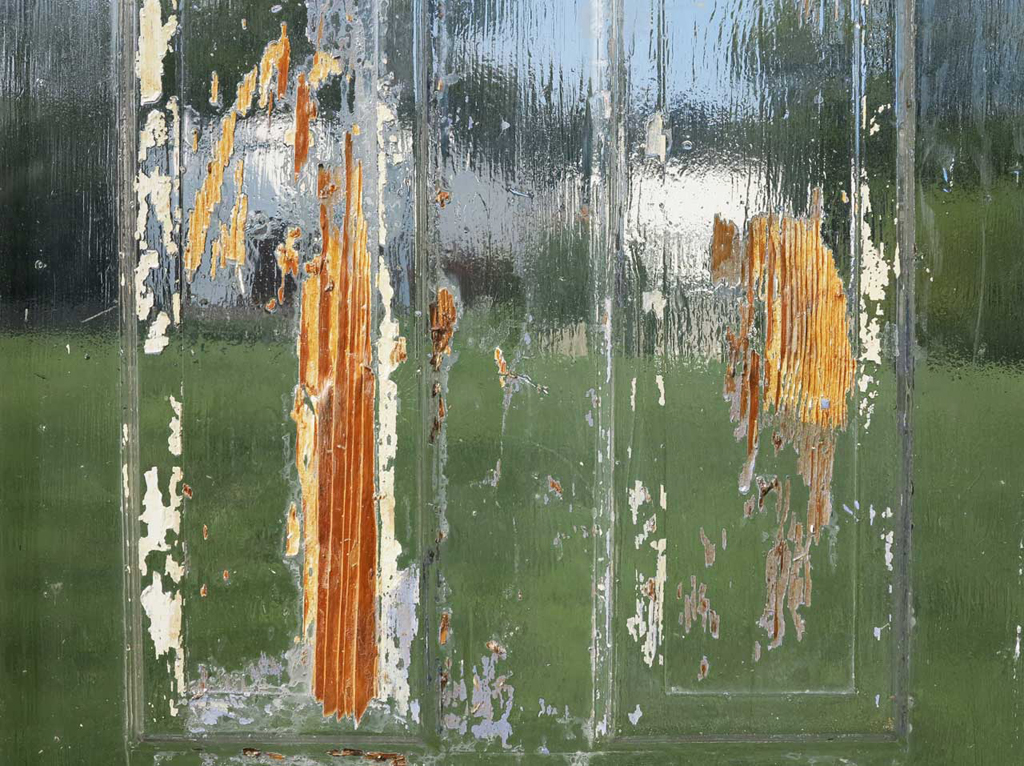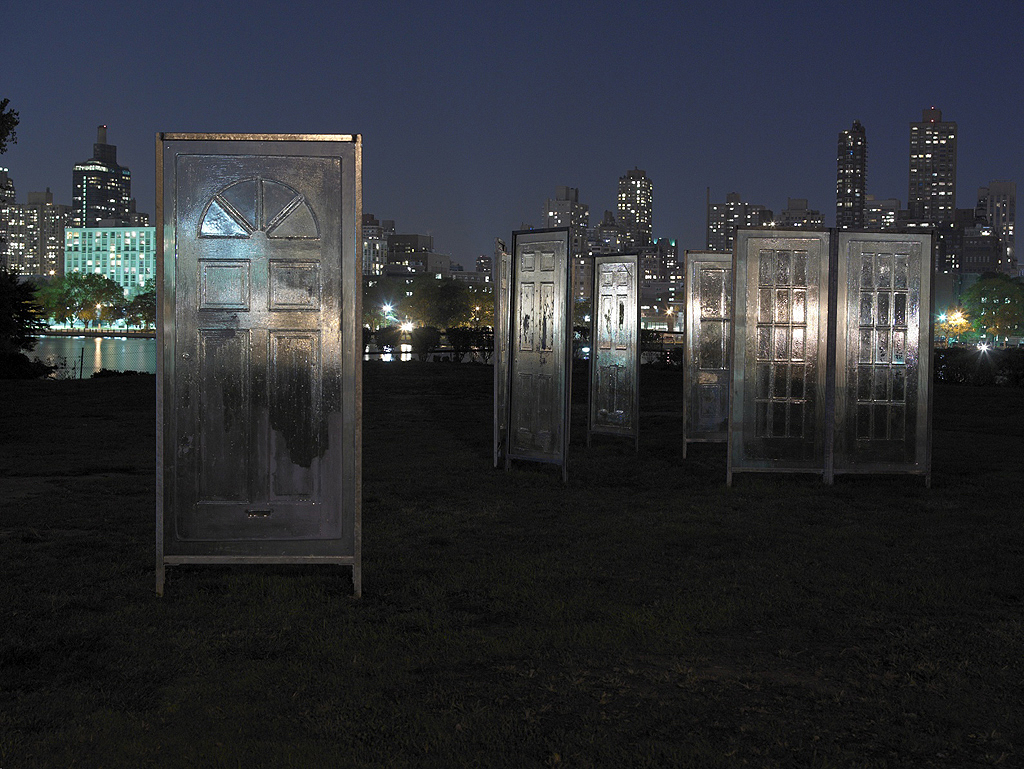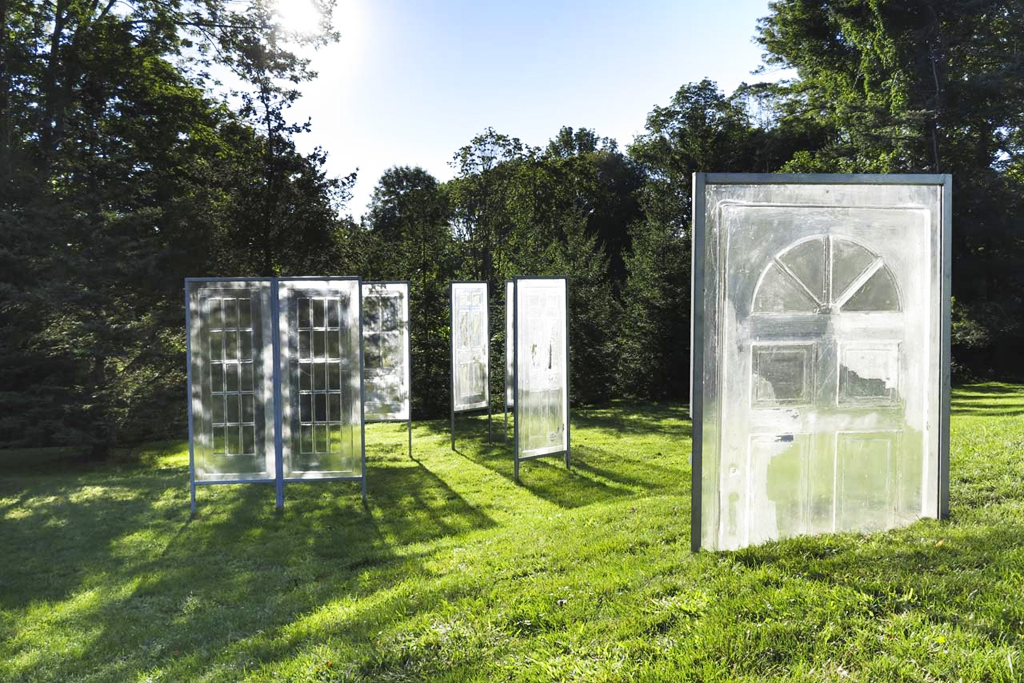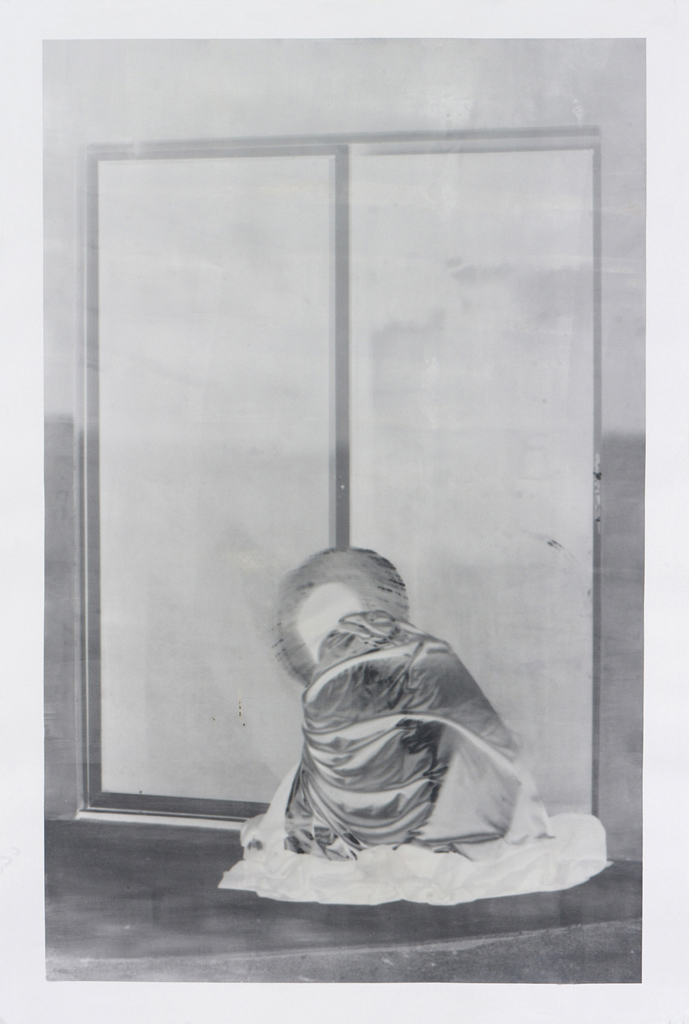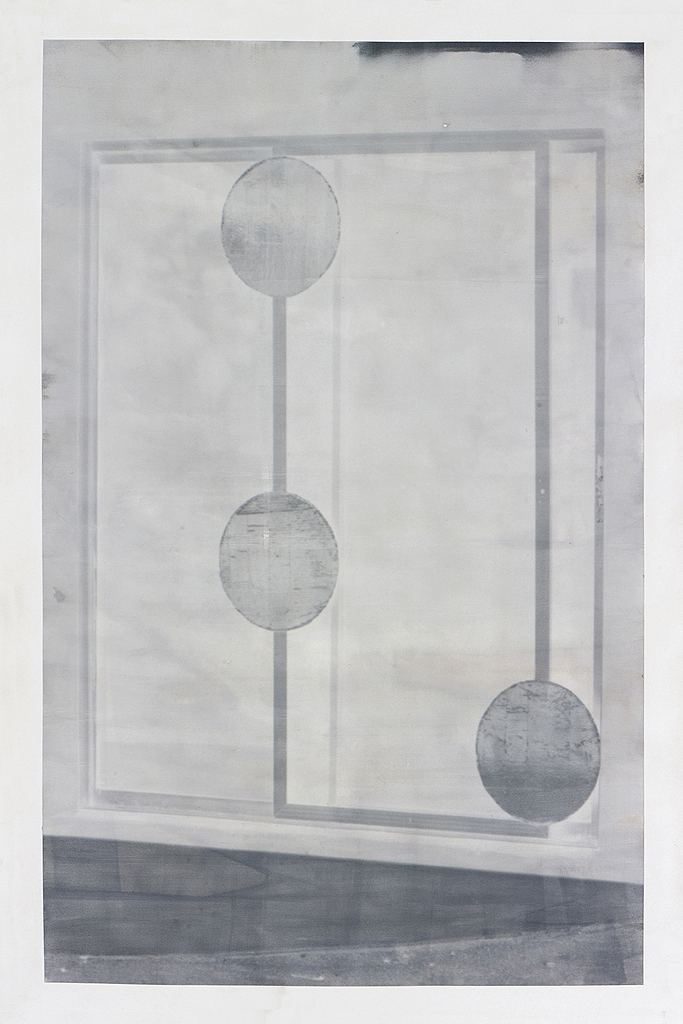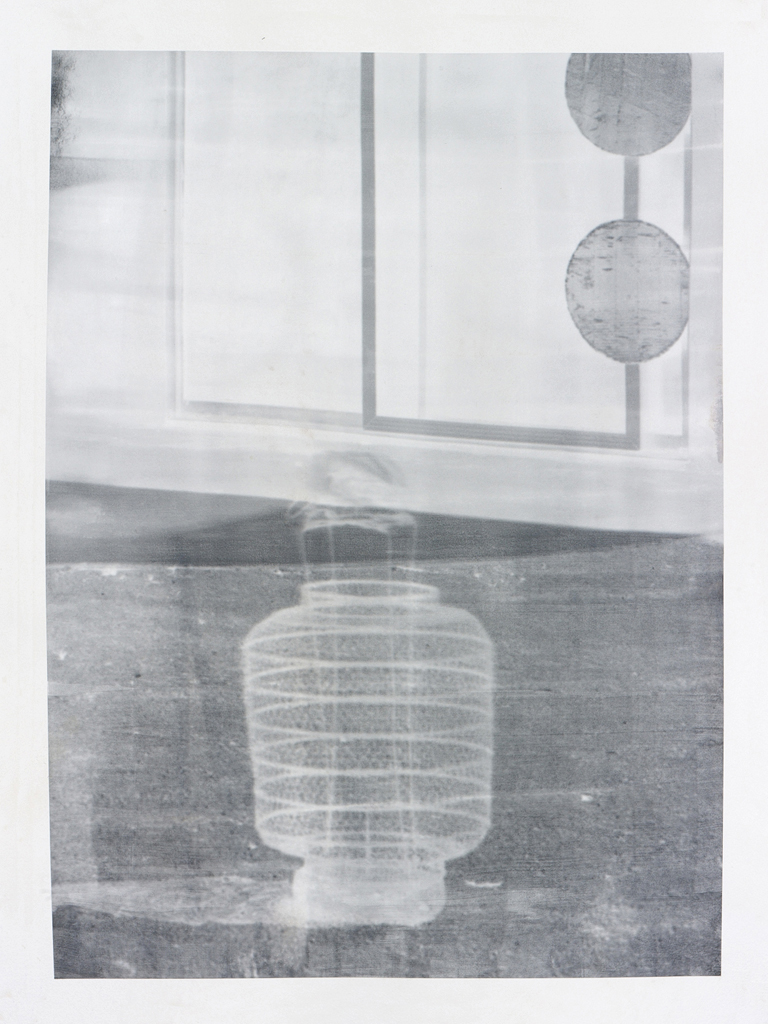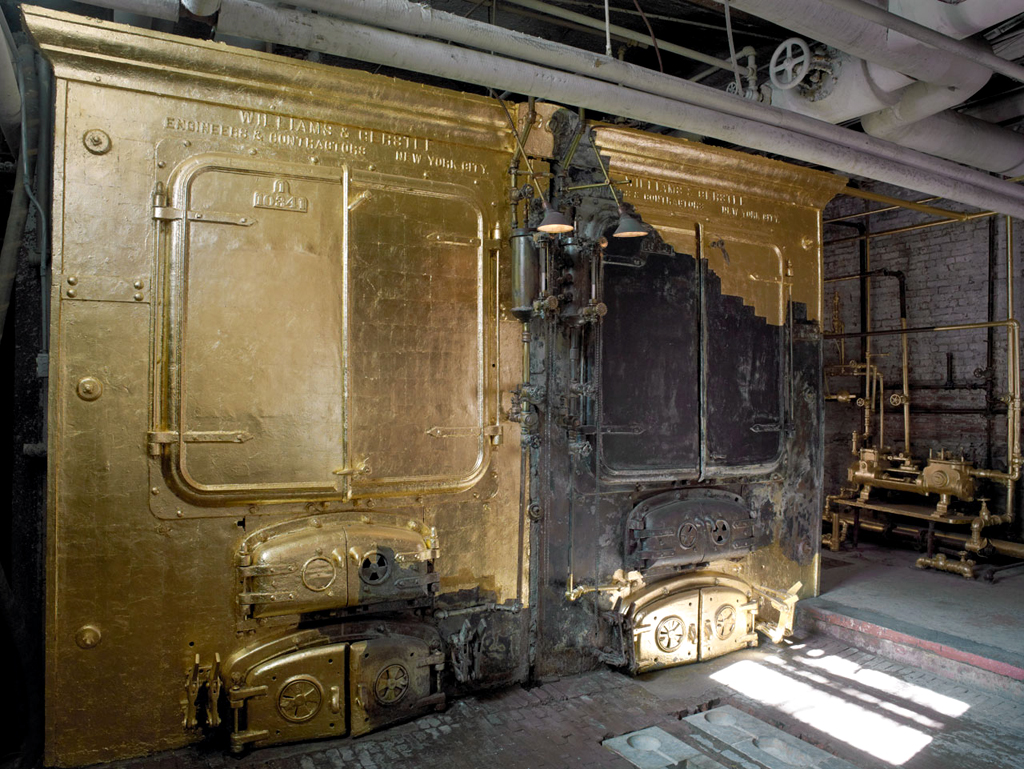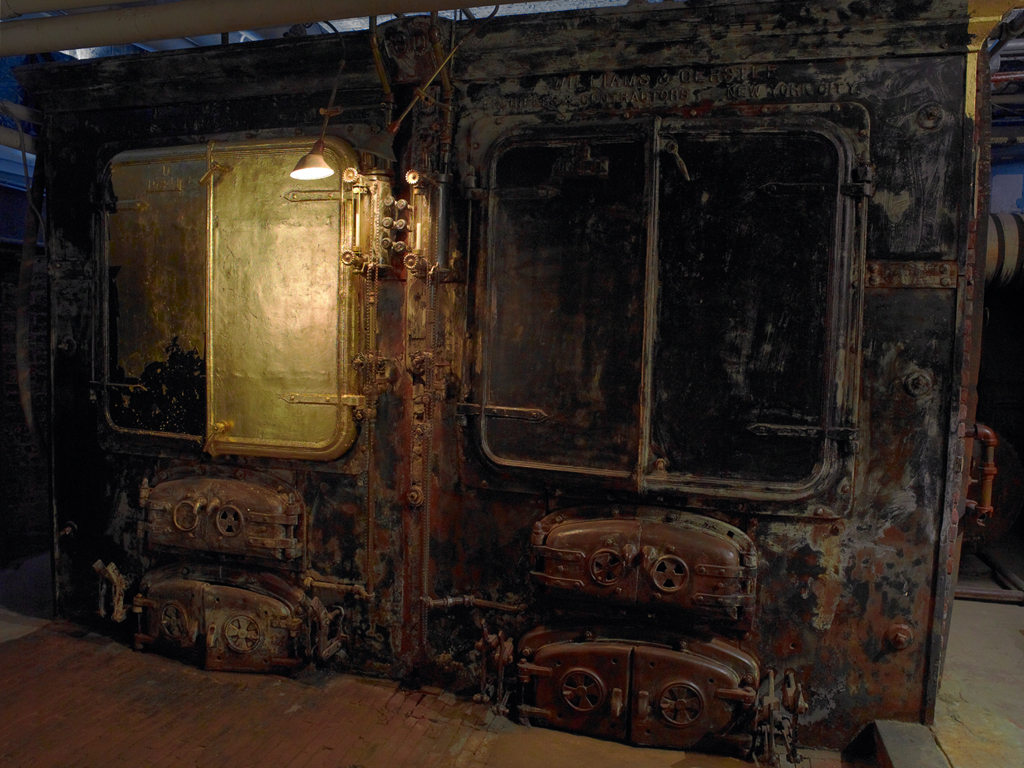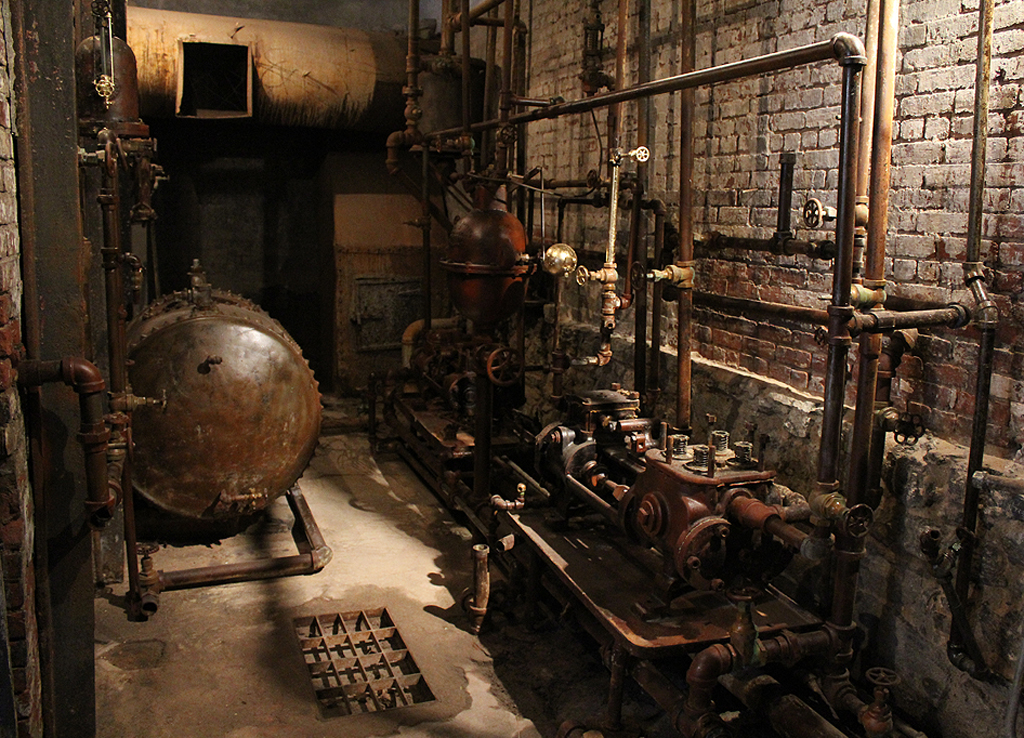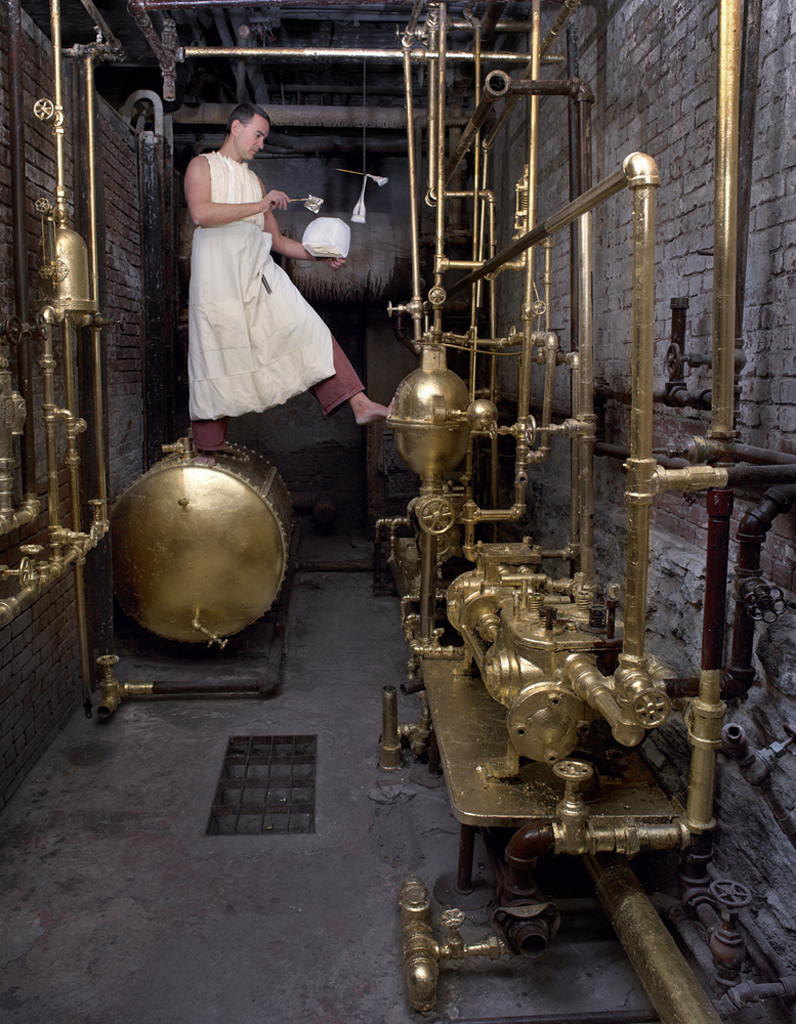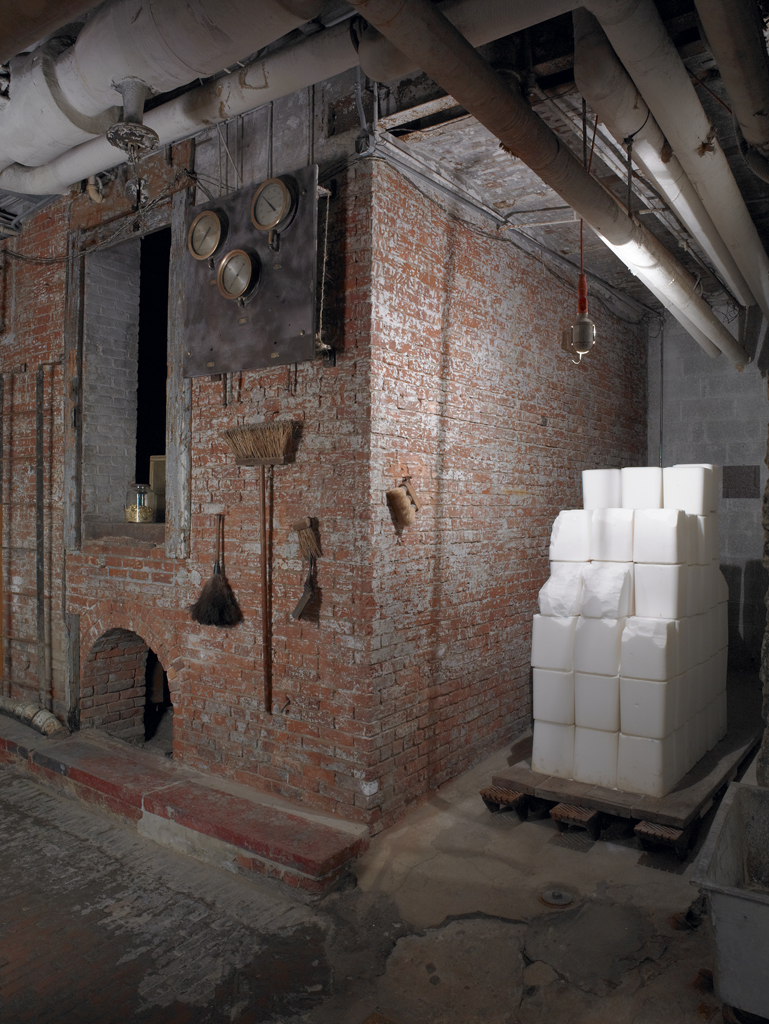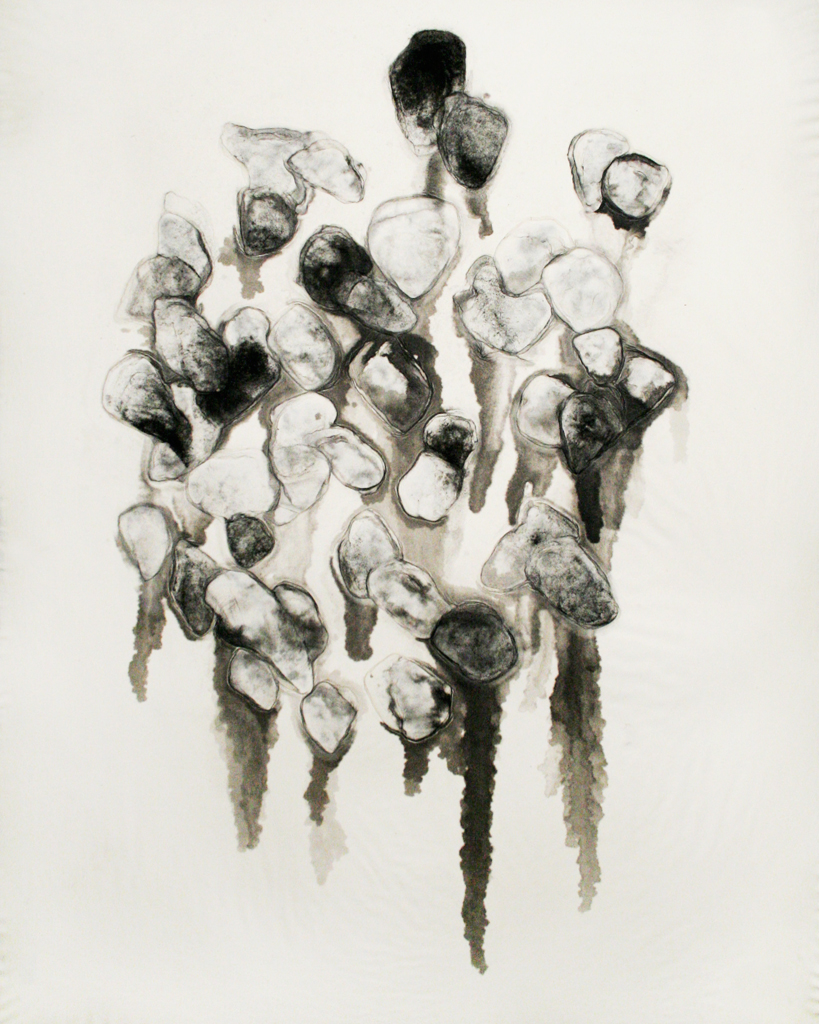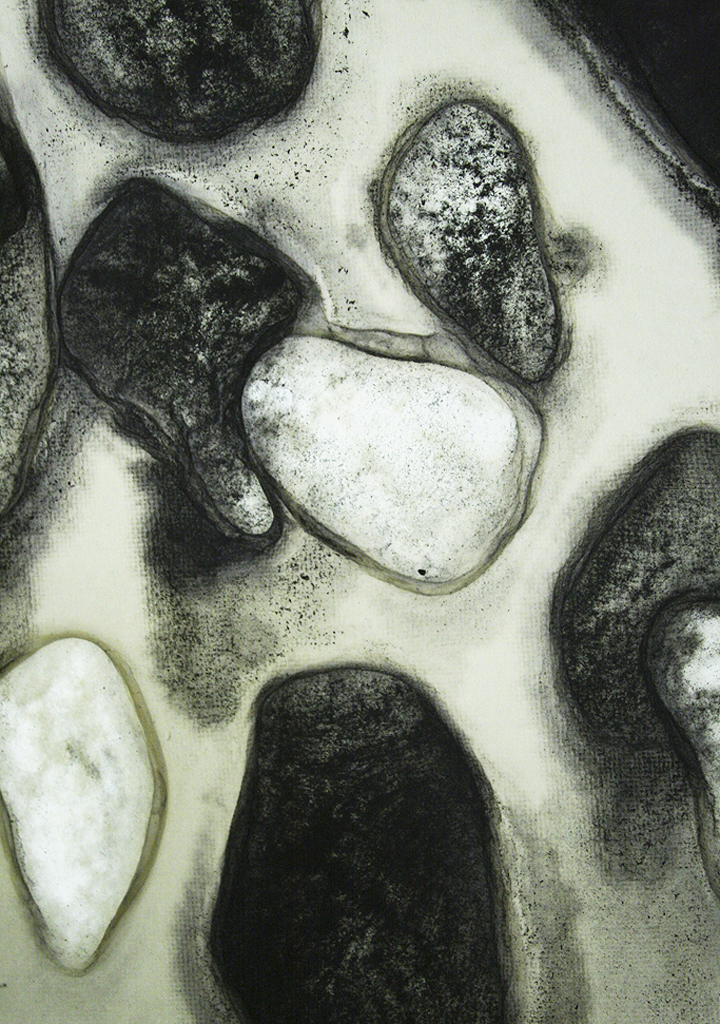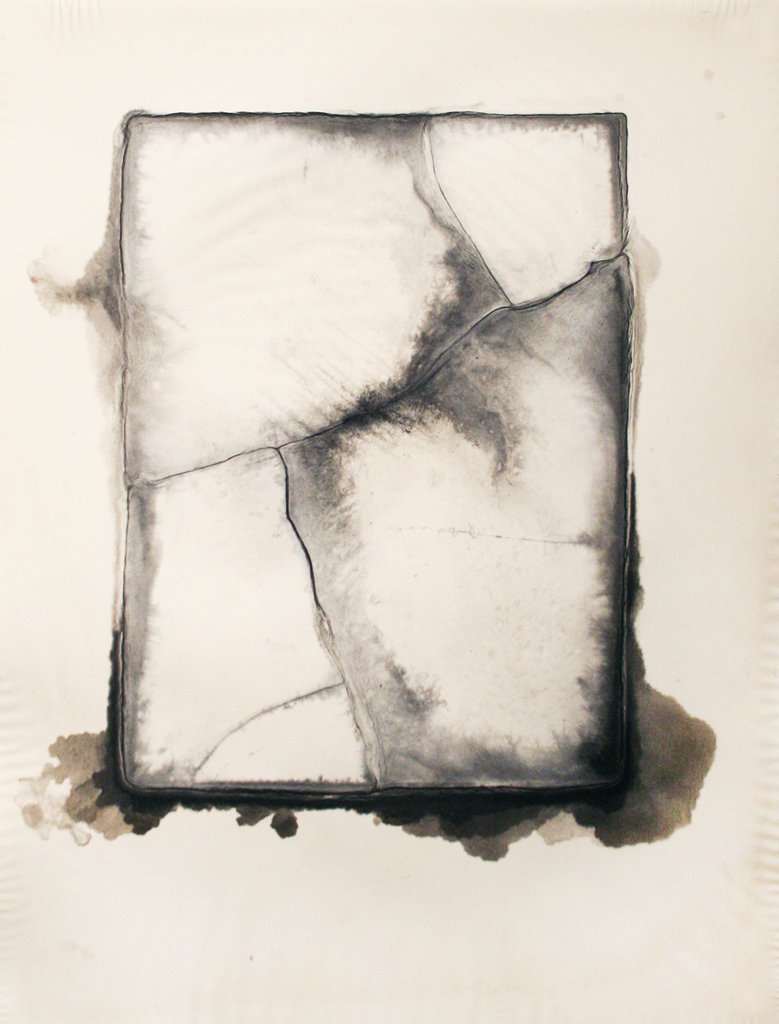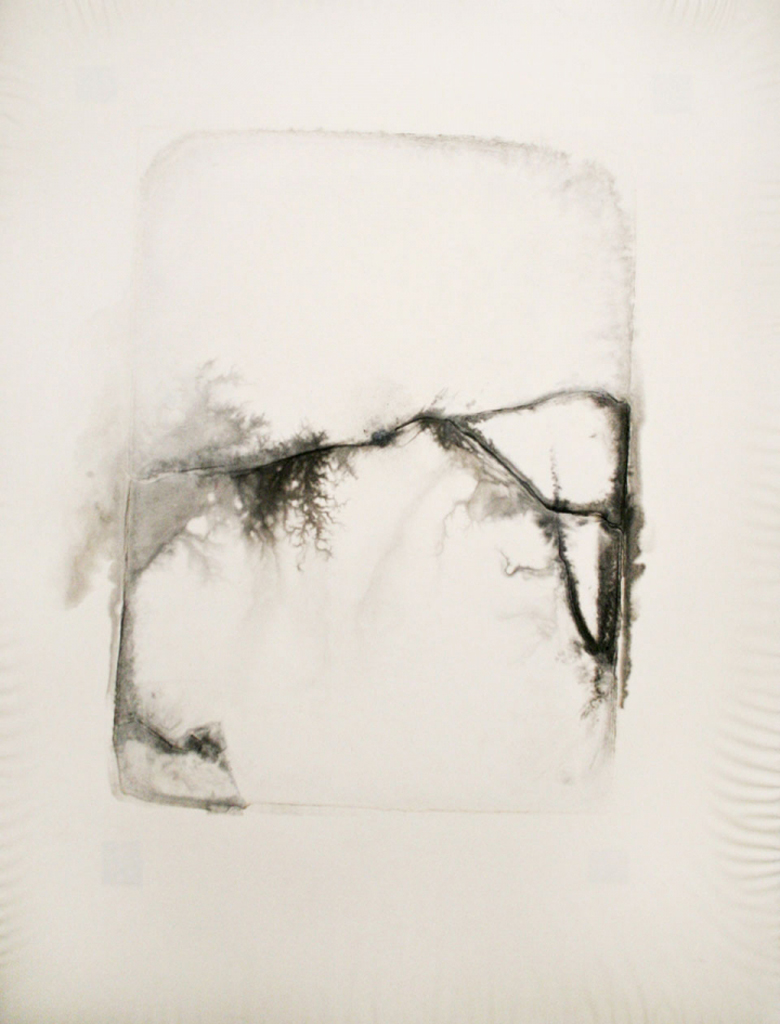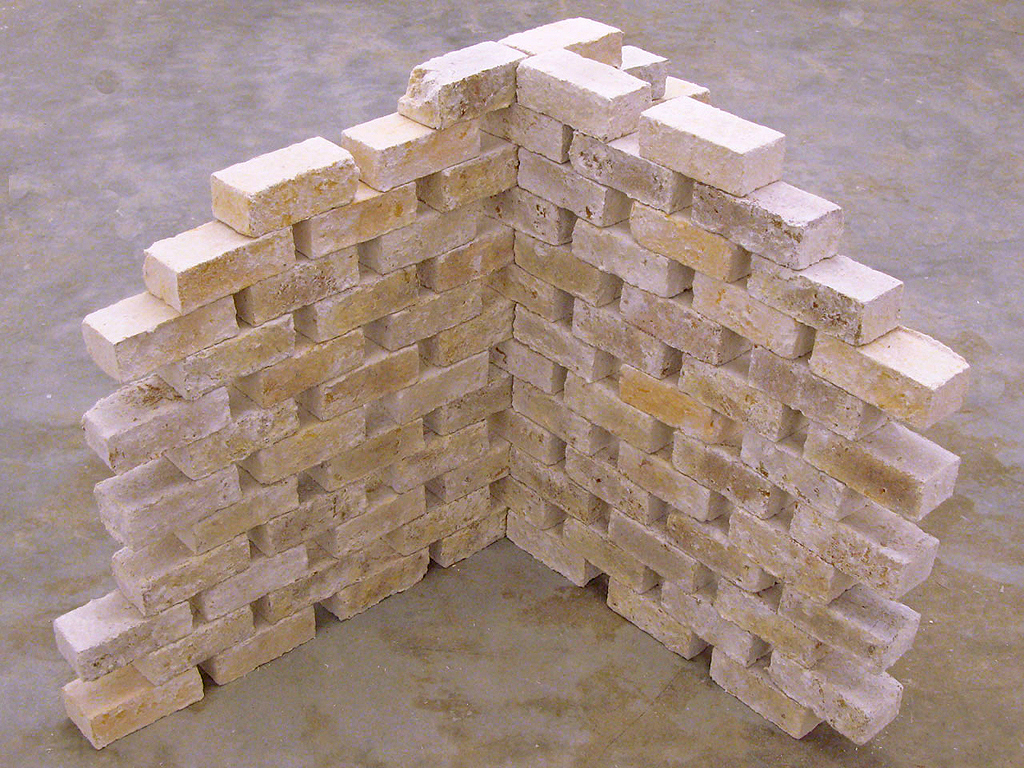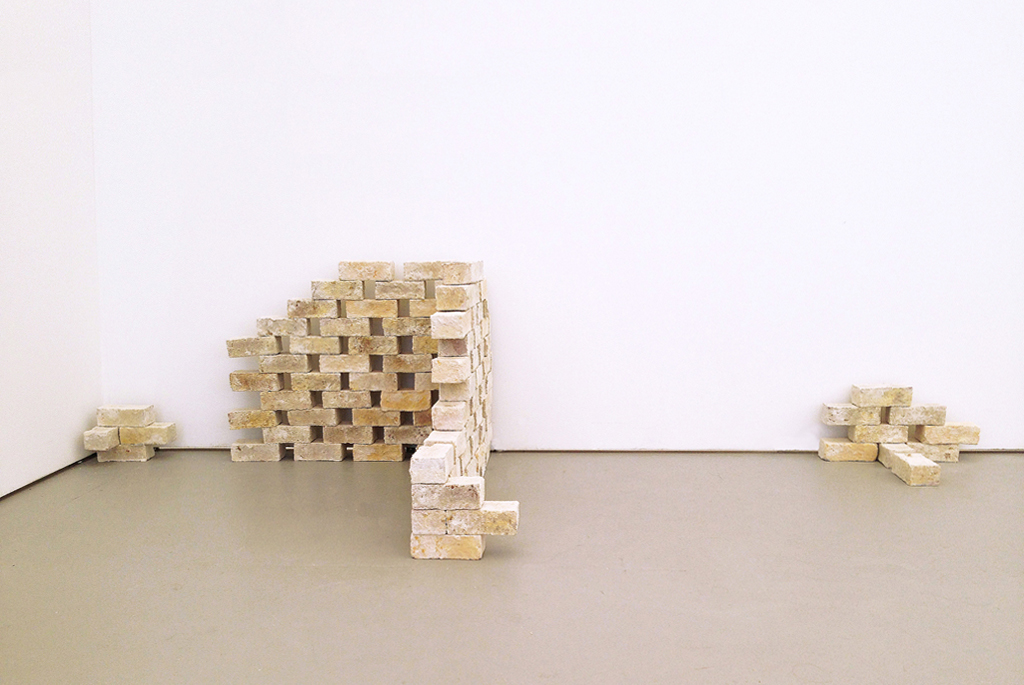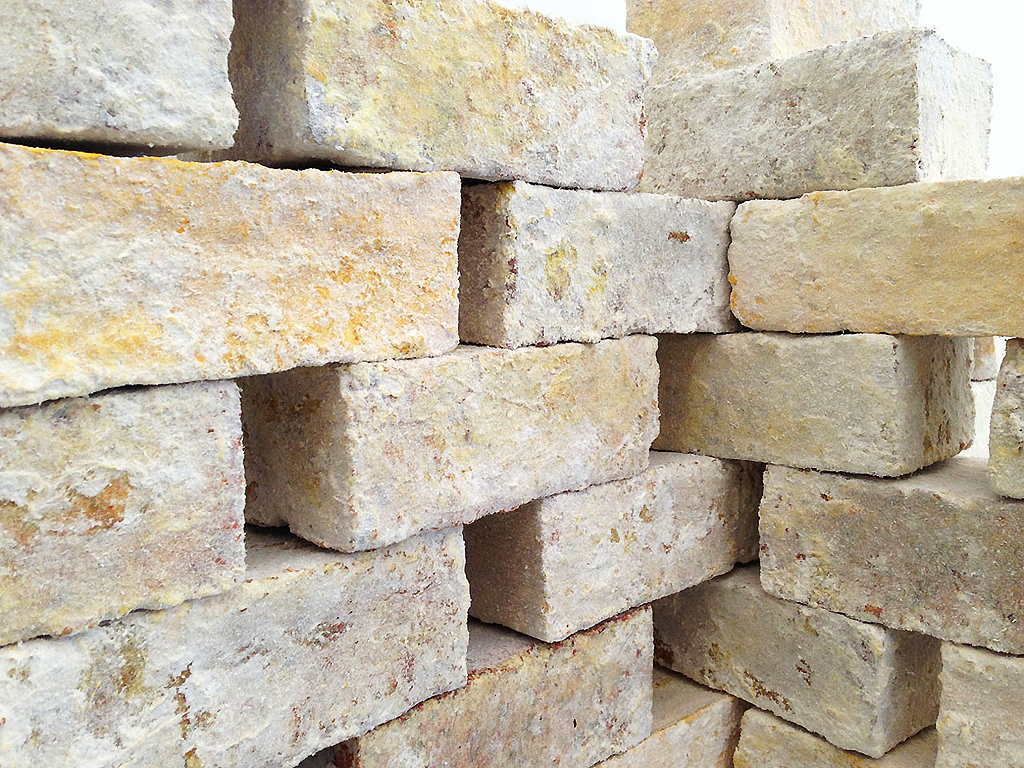What is my work about?
I’m interested in capturing the magnitude, energy and intensity that causes transformation. My sculptures are thresholds, charged transitional moments, suspended in physical form. They reveal the evidence of their history, their momentum through time, indicating past and potential stories. I often choose to work in mediums and locations that are unfamiliar to me so that research, improvisation and accident inform these unfolding narratives. Ephemeral and defiant materials such as ice, skin dust, sunlight and my own body are subjected to experimental processes. My intention is to engage the viewer in a visceral, physical experience of body and space.
Artist Statement
I begin each new work with attention to the generative power of material. I listen to its limits, taste its potential for transubstantiation and consider the history in which it is already entwined. My sculptures reveal the process of their making, their structure and surfaces exposing viewers to the sensation of time. My projects are thematically unified by my interest in the primal, symbolic affects of elemental materials such as sunlight and gold, ice and skin.
SUNLIGHT
Sunlight is captured and bent by the translucent casts of salvaged doors in Best Of All Possible Worlds. The casts delineate the architectural floor plan of an absent apartment. They are scarred with paint and wood embedded in their surface, remnants from the intense heat, fusion and rupture of the vacuum forming process by which they are made. The installation changes with the time of day, weather, season and is reimagined at each new site in which it is installed. In Queens by the East River it mirrors the high rises of Manhattan. In verdant Connecticut the installation is partially buried into a grassy hillside, emerging from the landscape as if through a process of erosion.
Sunlight is the primary technical, conceptual and formal element of the Heliogram Series, an ongoing project in Joshua Tree, California. A pinhole camera the size of a small apartment is used to take prolonged exposures of a character performing a series of durational ritualistic actions. The character is illuminated solely by the unfiltered desert light and exists in the context of an architectural threshold, which also acts as a solar instrument for optical communication. This handcrafted photographic process summons a pre-‐Renaissance experience of the world. By placing the subject in non-‐perspectival space I aim to evoke a pre-‐standardized, non-‐linear sensibility of time. A space in which time is irregular, fluid and supernatural.
GOLD
Central Governor, a project informed by alchemical philosophy, began with the transmutation of the dark, basement boiler room at MoMAPS1. I sandblasted the bricks and the decommissioned furnace to reveal its original iron surface under layers of dirt and rust, and removed decades of grime from the small, sidewalk level windows until a beam of sunlight traveled through the subterranean space. During a six-‐month-‐long performance in the boiler room, I embodied two distinct characters who worked slowly with uninterrupted attention while visitors to the museum stood in close proximity. One character swept the floor and chiseled away at a tower of 5000 lbs. of salt block. The other used old-‐world gilding techniques to gold leaf the surface of the boiler. Central Governor is a long-‐term installation at the museum.
ICE
Anthropocene Series draws on the elemental importance of water in the alchemical process of papermaking. Before the delicate fibers in paper align themselves and chemically bond together to create a strong web, paper is more liquid than solid. While the paper is still in a semi-‐liquid state I imprint it with shards of ice and brush on pigment in the form of carbon dust. I use pressure, temperature and gravity to drive interactions between pulp, pigment and ice. The pigment’s residual markings capture the fluid, sculptural process of paper turning from liquid to solid and ice from solid to liquid.
SKIN
How You Hold Something Inside Matters appears as a porous wall of brick-‐like cells that are arranged in relationship to the site of installation. Each brick is constructed of skin dust and water. Skin, as the external architecture of the body, must balance containment with permeability. The functional architecture of both physical structures and emotions requires a continuously shifting equilibrium between rigidity and plasticity, persistence and adaptability, space and boundaries. This ongoing project has been shown as a performance in which, brick by brick, the walls are deconstructed and rebuilt, dissolving and regenerating, lines erased and re-‐ drawn in response to the exhibition space.
CV
Education
2009
Bard College. Milton Avery School of the Arts. Master of Fine Arts. Sculpture.
Two Person Exhibitions
2013
Dieu Donne. Workspace Program. N. Dash and Saul Melman. New York, New York
Select Group Exhibitions
2014
Beyond Limits. Partner with Post Global Biennale in Poland. Curated by Denise Carvalho and Ginger Shulick. Art Institute of San Diego
2013
Sculpt EVV. Curated by Lisa Freiman. Evansville, Indiana.
Low Lives. Curated by Jorge Rojas. The Vault as SPACES. Cleveland, Ohio.
BoxoProjects. Curated by Bernard Leibov. New York New York .
2012
Untitled. Curated by Omar Lopez-Chahoud. Special Project. The Skull Sessions: Tim Hyde & Andrea Galvani in collaboration with Saul Melman and Alice Miceli. Miami, Florida.
Found Outside. The Aldrich Contemporary Art Museum. Curated by Alyson Baker and Richard Klein. Ridgefield, Connecticut.
Everything Is Index, Nothing Is History. The Invisible Dog. Curated by Melanie Kress and Natalie Bell. Brooklyn, New York.
What Cannot Be Cured Must Be Endured. Paul Robeson Galleries. Curated by Anonda Bell. Newerk, New Jersey.
Sculpt EVV. Curated by Marilu Knode. Evansville, Indiana.
Seeing Ourselves. The Center for Photography and the Moving Image. Curated by Koan Jeff Baysa. New York, New York.
2011
Norfolk. Theirry Goldberg Projects. Curated by Ron Segev. New York, New York.
Emerging Artist Fellowship. Socrates Sculpture Park. Long Island City Queens, New York
Trade School: Coincidence of Wants. Whitney Museum of American Art. New York, New York.
Low Lives 3. Networked Performance Festival. Produced and Curated by Jorge Rojas .
2010
Greater New York. Curated by Connie Butler, Klaus Biesenbach, and Neville Wakefield. MoMA PS1. In conjunction with Aki Sasamoto. Queens, New York.
Whitney Biennial: My Turn Series. In conjunction with Aki Sasamoto. Whitney Museum of American Art. New York, New York
Materia. Collaboration with Matthew Wilson. Cabinet Magazine Gallery. Brooklyn, New York
2009
10 x 10 x 10 Exhibition. Curated by Judy Sigunick. Ellenville, New York.
2008
Bard Thesis Exhibition. Curated by Jess Wilcox. Red Hook, New York.
Four Handed Lift. Curated by Bernard Leibov, Almond Zigmond and Jessica Frost. Moti Hasson. Gallery. New
York, New York.
2005
Burning Man Project. Black Rock Desert. Nevada.
Knock at the Door. Curated by Seth Cameron. Lower Manhattan Cultural Council at Mellville Gallery. New York,
New York.
2004
Burning Man Project. Black Rock Desert Nevada
After Duchamp. Curated by Judith Hooks, Gallery 218. Milwaukee, Wisconsin
2003
Burning Man Project. Black Rock Desert Nevada
Long-Term Installations
2011 – Present
Central Governor. MoMAPS1 Queens, New York.
Permanent Installations
2013
1 Maple. Evansville, Indiana
2012
Best Of All Possible Worlds. Evansville, Indiana.
Residencies and Grants
2014
Lower Manhattan Culture Council. Process Space Residency. Governors Island. New York.
Joshua Tree Highlands Artist Residency.
2013
Dieu Donné. Workspace Program. New York, New York.
BoxoHouse. Joshua Tree, California.
2012
BoxoHouse. Joshua Tree, California.
2011
Socrates Sculpture Park Emerging Artist Fellowship Grant and Residency.
2008
Genesis Project Residency. Philadelphia, Pennsylvania. Produced by Culture Push.
2004
Burning Man Artist Project Grant
2003
Burning Man Artist Project Grant
Bibliography
2014
Melanie Kress. Alchemy and the Anthropocene. Culture Hall
2013
Mark Lane. Best Of All Possible Worlds. The Believer Magazine.
Art-Rated. Interview with Saul Melman. Jonathan Beer with Saul Melman
2012
The Skull Sessions. Tim Hyde and Andrea Galvani in conversation with Saul Melman.
Everything Is Index, Nothing Is History. Curated by Melanie Kress and Natalie Bell. Catalogue
Found Outside. Curated by Richard Klein and Alyson Baker, The Aldrich Museum of Contemporary Art. Catalogue
2011
Aldrin Valdez. Interview with Saul Melman. Artslant. October 2011.
Cashdan, Marina. Top Ten (Plus One) Most Promising Emerging Artists 2011. Huffingtonpost
Roncevic, Elizabeth. Ten Living American Artists. The Digital Americana.
Low Lives 3 Networked Performance Festival. Produced and Curated by Jorge Rojas. Catalogue.
2010
Greater New York 2010. Curated by Connie Butler, Klaus Biesenbach, and Neville Wakefield, MoMA PS1.
Catalogue
Smith, Roberta, “Take Me Out to the Big Show in Queens”. New York Times.
Saltz, Jerry, “Sincerity and Irony Hug It Out”. New York Magazine.
Chamberlin, Colby. “Greater New York 2010”. Art-Agenda.com
2006
Hopkins, David, Art-As- Idea: Re-thinking the “Duchamp Effect”. A Companion to Contemporary Art Since 1945.
Editor Amelia Jones. London. Black well. Oxford.

